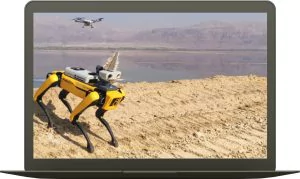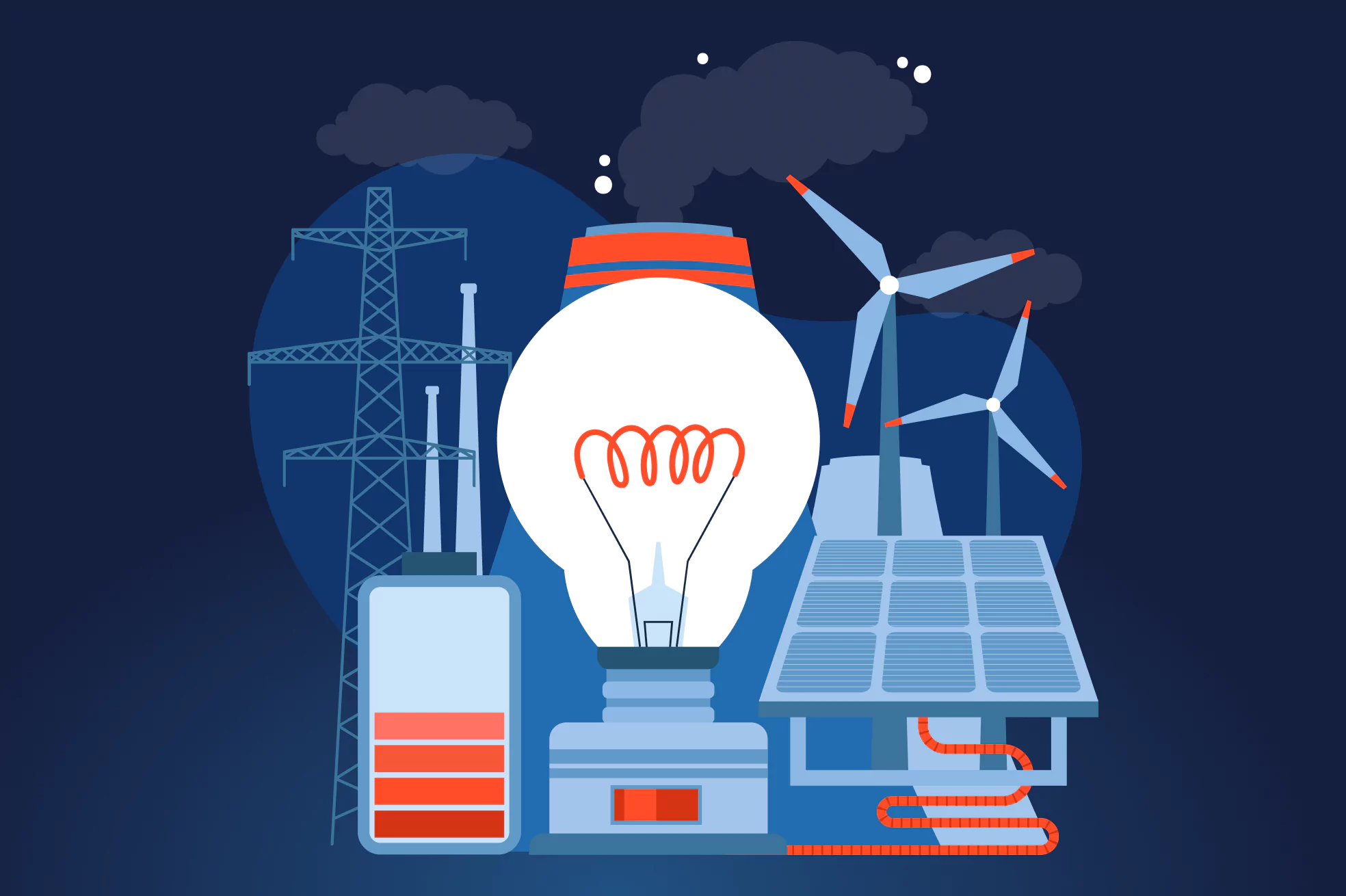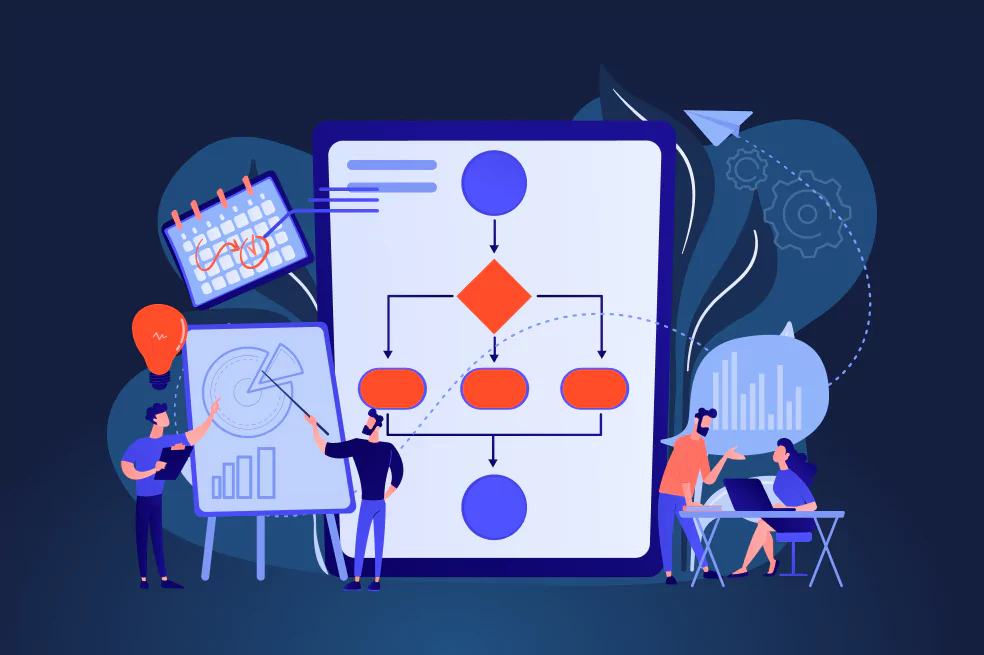The first industrial revolution was something like two and a half centuries ago, and it was a huge stress to the entire humanity. Today, the fourth wave of industrialization is much more subtle, but equally important in terms of the impact made on the global economy.
With Internet-of-Things (IoT) solutions coming into the field of various industries, many things are changing right now. Improved efficiency, reduced production downtime, workplace safety, cost savings, decrease of carbon emissions, and such are the improvements that industrial IoT (IIoT) can deliver to almost any company within the industrial sector. For these reasons, the industrial IoT market is going to grow up to 106.1 billion by 2026, which means many new opportunities for businesses thanks to innovative solutions.
As the market is flooded with new IoT products (to say the least), it’s hard to come up with something revolutionary. But you don’t have to worry about that. In this article, the JatApp team will describe top industrial IoT use cases, so you can identify your opportunities and better understand what solutions are currently in demand.
The nuts and bolts of industrial IoT
For starters, let’s define what industrial IoT is to make sure we mean the same thing. Industrial IoT refers to connected devices, sensors, scanners, and such that are used across various industries like manufacturing, logistics, energy, chemicals production, mining, and other sectors to improve productivity, safety, cost management, quality assurance, and so on.
In other words, industrial IoT are the connected solutions used for improving various aspects of any industry. Unlike consumer IoT, such devices are not meant to benefit individual users, but organizations and their stakeholders.
Industry 4.0: what and how + examples
With IoT devices, the fourth wave of industrial revolution becomes possible. That’s why industry 4.0 usually means that companies powerfully drive their performance with such technologies as connected devices, data analytics, and artificial intelligence (AI). These technologies connect well with each other, but IoT solutions are actually the centerpiece of industry 4.0.
As a matter of fact, there are sound reasons why IoT is the hallmark of the modern industrial sector. Efficiency optimization and automation of processes are the main advantages of industrial IoT. At the same time, technological advancements in semiconductors, growing investment in research and development, as well as massive switch of businesses on cloud computing platforms are the main drivers of industrial IoT growth.
Moreover, industrial IoT is a technology that is literally going above its head, with a help of which businesses can take their performance to a new level right now. For that reason, we suggest you take a look at the current IIoT applications that are on a tear.
Predictive maintenance and automated equipment management
Almost any industry depends heavily on various machinery that sometimes may falter. And once any piece of equipment doesn’t work, the whole production process stops. Such pauses negatively impact the company’s revenue and cause delays within the entire supply chain.
With the use of smart sensors and scanners, any equipment failure can be prevented or fixed within the shortest time possible. Moreover, collecting real time data from production equipment enables manufacturers to analyze how well they manage their operations and whether any inefficiencies are present.
For example, when a water pump is going to break, smart sensors send a notification about a possible failure, so workers can take action and prevent production downtime.
It is also possible to combine predictive maintenance with remote equipment control. Identification of machinery’s location, performance status, and current workload can enable businesses to observe how well their performance works, where it’s located, and whether some of the items stay idle for too long.
Additionally, it would be strange if we say that a standalone IoT technology for checking the equipment status is impossible. Actually, our client from Switzerland had a whole network of charging stations for electric vehicles, and a need for making charging points connected and active all the time; this need brought them to JatApp with a request to develop a solution for monitoring EV charging stations.
Our team developed a web application that enables EV owners, businesses, and the charging stations provider monitor the status of charging points. Each user group has access to features that inform them about charging stations’ performance status, location, and current occupancy. This solution became possible only owing to IoT technology, since every single charging point is connected and can send real time data about its status.
Inventory management and logistics
A rare industry can live without supply chain management, and IoT solutions have a wide range of use cases here. As soon as any goods are stored in a warehouse, industrial IoT devices come into play. Smart sensors can take control of storage conditions, while radio frequency identification (RFID) tags and Near-Field Communication (NFC) chips are efficient tools for tracking goods location within the warehouse and on the way to the next link of the supply chain.
In addition, barcodes and Quick Response (QR) codes can be scanned to provide information about the cargo’s storage requirements, handling guidelines, and delivery details.
DHL is one of the most prominent examples in this respect. The logistics giant has implemented an IoT network across the entire supply chain it serves: from connected warehouses to trucks and barcodes/RFID tags on goods packages. If the industry’s leader fires cannons of money at IoT solutions, there’s something beneficial about this technology, isn’t it?
On a side note, robots should be mentioned, otherwise they may attack us. Amazon uses robots at their warehouses to help humans find and fetch customers’ parcels, thereby making order handling faster and more efficient, as robots appear to be more handy when it comes to bringing a package and not dropping it on the floor.
Predictive quality management
Aside from quality control during a product’s storage and delivery, manufacturers can improve quality of their goods during the process of their production or even after selling the product to the customer. Smart devices can collect data from equipment, production environments, and human behaviors to inform a manufacturer about factors that influence the product’s quality.
The data can be processed with Big Data analytics or artificial intelligence (AI) and determine patterns that the manufacturer follows to produce a particular good. Thus, the manufacturer has a bird-eye view of the production process that can prompt quality improvement decisions and process optimization.
In such a way, businesses can find ways how they can enhance the quality of their products and potentially reduce costs and waste. And again, Amazon AWS offers best-in-class solutions. The corporation provides businesses with AWS IoT across various industries, from car manufacturing to farming. Just imagine how vast opportunities are within this category of industrial IoT!
Workplace safety and emission reduction
Many industries cannot exist without the use of chemicals and various hazardous materials, which is why workers safety is a top concern for many companies. Luckily enough, the industrial IoT systems can help here, too.
First, smart sensors for detecting the leak of hazardous materials or notifying workers about a potential danger of entering a certain area are the common solution. In the same vein, connected scanners can be used for measuring carbon dioxide emissions and air pollution in order to minimize power consumption and environmental footprint.
It’s also possible to go further and install smart sensors on a worker’s overalls or protective helmets. As soon as a worker enters a dangerous area, the device alerts them to leave the place or take extra care while doing their work tasks.
However, contact with hazardous environments can be extremely harmful to humans even though they take the necessary precautions. That is why robots can be a viable alternative here. The industrial drone company Percepto partnered with well-known Boston Dynamics to create autonomous robots that can be used for various purposes, like, for instance, monitoring of dangerous areas, performance of military operations, and so forth.
The solution is called Autonomous Inspection and Monitoring, and it enables companies to increase performance efficiency and workforce safety by sending robots to gather information within an area that is dangerous to humans. As a result, businesses are able to speed up their operations and ensure that their employees are not exposed to safety risks.
Power and utilities management
Industrial IoT projects are also becoming an essential part of businesses that work with power and utilities supply. Again, connected grids, meters, and sensors can help to measure resources consumption and identify bottlenecks that make energy/utilities supply ineffective.
By identifying various patterns in resources consumption, usage peak hours, distribution across the network of users, and other data-driven insights utilities providers optimize their performance and cut costs for users, since the provider has a more efficient way of supplying utilities (credits to IoT, of course).
As a matter of fact, IoT solutions for the power and utilities industry are a so-much-untapped market, which requires a separate article. Don’t worry, we are already working on it.
Last example we’d like to talk about is very useful and surprisingly obvious: robots once again (no Skynet involved, we promise). Keeping solar panels and batteries clean appears a challenging task for humans, which is why making this process automated and of high quality is another business opportunity that startups are already attempting to gain profit from.
Powermant, a big player in the wireless charging market, collaborates with Jetsons Robotics that builds robots for cleaning solar panels. The companies venture to develop a charging station for autonomous robots to make the process of solar panel cleaning streamlined. A truly helpful solution that doesn’t look like Terminator.
Robocleaner in action
We told you that industrial IoT has progressed much deeper than we could ever think. And all that jazz is just the beginning.
The future technology can be tamed by experienced tech professionals only
Whatever industrial IoT solution you’ll decide to opt for, you have to remember that industrial IoT always has a complicated technology behind it. And that’s why you will definitely need an experienced tech team who will be able to handle development of a sophisticated industrial IoT solution that meets your business requirements.
JatApp can provide you with the best tech talent in Eastern Europe who will deliver you a quality IIoT product that is totally aligned with your business needs. Contact us to get our professional help. We’ll get back to you as soon as possible.
















